Today, I am reviewing another tenor saxophone mouthpiece made by a young mouthpiece maker, refacer and saxophone player from Russia named Kirill Poudavoff. Kirill is a great young tenor sax player that is in his fourth semester at Berklee College of Music in Boston.
Kirill sent me four 3-D printed examples of his tenor saxophone mouthpieces made of plastic after I asked if I could perhaps try out his mouthpiece work. I have already reviewed the KPoudavoff Double Ring 7* tenor saxophone mouthpiece, the KPoudavoff Florida 7* tenor mouthpiece and the Kpoudavoff Zimberoff Dukoff Hollywood 7* tenor saxophone mouthpiece.
Today, I will be reviewing the KPoudavoff Zimberoff Dukoff Hollywood 6* tenor saxophone mouthpiece with Dexter Gordon’s unique facing curve applied to it. I have never played a Dukoff Hollywood tenor saxophone mouthpiece before so I am very excited to try out this KPoudavoff copy of this iconic (thanks to Dexter Gordon) tenor saxophone mouthpiece. The fact that this tenor mouthpiece allegedly has Dexter Gordon’s exact facing curve applied to it makes me even more excited to try this mouthpiece.
KPoudavoff Zimberoff Dukoff Hollywood 6* Copy with Dexter’s Curve Tenor Saxophone Mouthpiece
Here is some information about Dukoff Hollywood tenor saxophone mouthpieces as well as the Zimberoff model Dukoff Hollywood mouthpieces from Theo Wanne’s mouthpiece museum page:
“Dexter Gordon played on a Conn 10m tenor saxophone and a Dukoff BD Hollywood tenor saxophone mouthpiece during the Blue Note era until the mid-sixties. There has always been a huge debate about which model BD Dukoff tenor sax mouthpiece Dexter Gordon played, the 1945 medium chamber or the 1949 large chamber model. I know there was a 1949 Dukoff BD Hollywood tenor saxophone mouthpiece stamped “DG Special” on the side with a 6* tip opening. This might have been a ‘Dexter Gordon’ Special model, so I suspect he played on this model tenor mouthpiece. About 100 of these tenor mouthpiece blanks were sold to Zimberoff -House of Note, who produced a tenor saxophone mouthpiece under their own name. Some of these tenor sax mouthpieces had the model name Vibra Metal.”-Theo Wanne
Theo’s page where this quote is from also states that there were only 200 1949 BD Hollywood tenor mouthpieces made (same blank as the Zimberoffs), and then only 100 Zimberoff Hollywood tenor saxophone mouthpieces made. That is only 300 Dukoff Hollywood Zimberoff style tenor saxophone mouthpieces in total. I would love confirmation of this fact if any of you out there have more information on this subject……. If true, those numbers make the Dukoff Zimberoff Hollywood tenor sax mouthpiece pretty darn rare.
KPoudavoff Zimberoff Dukoff Hollywood Copy Tenor Saxophone Mouthpiece in Solid Silver
Here is also a post from SOTW (Sax on the Web) by Doc Tenney about the Zimberoff Dukoff Hollywood tenor saxophone mouthpieces:
“The Zimberoff tenor saxophone mouthpieces are actually “stencil” mouthpieces in that the “real” ones were made by Dukoff and marked “Zimberoff House of Music” with five 5-pointed stars in a circular pattern on the top of the barrel. The actual blank is a one-piece cast brass “B.D.” series Dukoff mouthpiece with a rather unusual and very sophisticated baffle design that has a very distinctive longitudinal concavity or trough running from just behind the tip rail into the back chamber of the mouthpiece. Many of us refer to any Dukoff mouthpiece having these particular features as a “Zimberoff” even though they are not “stenciled” with the Zimberoff markings. I have had several of these mouthpieces through my shop recently. The “voice” is just as smooth as the original very early “stubby” model mouthpieces and has much more color complexity than any of the later “B.D.” 2-piece model tenor sax mouthpieces with no loss of center. For many players, including myself, the Dukoff Hollywood Zimberoff model mouthpiece is the most preferred of the California Dukoff mouthpiece designs. Fortunately, I have two of my own!”-Doc Tenney
KPoudavoff Zimberoff Dukoff Hollywood 6* Copy with Dexter’s Curve Tenor Saxophone Mouthpiece
If you haven’t heard of Kirill Poudavoff yet, check him out in the video near the bottom of this review. Kirill sounds more like Dexter Gordon than any other tenor sax player I have heard. It is so interesting to watch Kirill play the tenor saxophone because not only does he sound like Dexter Gordon but he also imitates many of the same mannerisms as Dexter Gordon. The saxophone is hanging lower like Dexter held it. Kirill’s head is tilted down like Dexter tilted his head. Kirill’s embouchure and bottom lip position is similar to Dexter’s embouchure and bottom lip. The way Kirill breaths is like Dexter when releasing his lower lip to take a breath. Lastly, I was watching a Dexter Gordon video and took note of Dexter’s eyebrows going up when he jumped into the higher register of the saxophone (If you don’t believe me, check out from 4:00-4:30 of the Dexter Gordon video at the bottom of this review). Later that day, I was watching one of Kirill Poudavoff’s videos and he did the exact same eyebrow movement when jumping up to a higher note on the saxophone. That cracked me up.
All of these commonalities between Kirill Poudavoff and Dexter Gordon go to show the power of imitation when it comes to reproducing an idol’s saxophone tone. All of these factors, go towards reproducing a tenor saxophone sound that is similar to Dexter Gordon’s sound. These are just the things we can see outwardly. I am sure there are many techniques Kirill has discovered through his years of practice and imitation of Dexter Gordon that have brought him closer to sounding like Dexter. Perhaps the position of his tongue, the puff of his cheeks, the strength of his reed and looseness of embouchure, etc……. All this reminds me of a Tony Robbins quote I read years ago: “If you want to be successful, find someone who has achieved the results you want and copy what they do and you’ll achieve the same results.” It looks to me like Kirill Poudavoff is doing just that. Kirill is still a young man and I for one, can’t wait to see where he goes from here.
KPoudavoff Zimberoff Dukoff Hollywood Copy Tenor Saxophone Mouthpiece in Solid Silver
When I asked Kirill if I could try out some of his saxophone mouthpiece work, I had no idea that he would send me four 3-D printed tenor saxophone mouthpieces to check out. Here is what he sent me:
- KPoudavoff Double Ring 7*- copy of an Otto Link 7* Florida Double Ring Super Tone Master
- KPoudavoff Florida 7*- copy of an Otto Link 7* Florida Super Tone Master
- KPoudavoff Zimberoff Hollywood 7*- copy of a Dukoff Hollywood Zimberoff 7* model
- KPoudavoff Zimberoff Hollywood 6* (Dexter’s Curve)- copy of a Dukoff Hollywood Zimberoff (with Dexter Gordon’s 6* facing curve on it)
I have reviewed all of these tenor saxophone mouthpieces separately, one after the other, so you can get a complete sense of Kirill Poudavoff’s work.
KPoudavoff Zimberoff Dukoff Hollywood Copy Tenor Saxophone Mouthpiece in Solid Silver
First, I have to start with the disclaimer that Kirill Poudavoff told me that he doesn’t make these 3-D printed tenor saxophone mouthpiece models any longer. Right now, at the time of this review, he is only making the tenor saxophone mouthpiece models listed above in solid silver for 750 dollars each. I have posted a few photos of the tenor mouthpieces in metal throughout this review so that you can see how the mouthpieces look in solid silver as well.
That being said, Kirill did say that these four 3-D printed tenor saxophone mouthpieces were a good representation of his work and played similarly to the solid silver versions of these mouthpieces.
The four KPoudavoff tenor saxophone mouthpieces I received look to have the same outward size (diameter and length), shape and contours of the Otto Link and Dukoff Hollywood tenor saxophone mouthpieces they are copies of.
The KPoudavoff Zimberoff Dukoff Hollywood 6* tenor saxophone mouthpiece has a similar engraving and lines on the shank as an original Zimberoff Dukoff Hollywood tenor mouthpiece but instead of having “Zimberoff Hollywood” engraved on the shank, it has “KPoudavoff Hollywood” engraved on the shank. The tip opening of 6* is engraved on the corner of the body to the right of the table with the initials DG (Dexter Gordon) next to the facing number.
KPoudavoff Zimberoff Dukoff Hollywood 6* Copy with Dexter’s Curve Tenor Saxophone Mouthpiece
On initial examination, you can see the sanding marks on the plastic material of the mouthpiece where Kirill sanded the table and worked on the baffle area of the mouthpiece. Although the sanding marks look rough, the baffle area and table feel very smooth to the touch. These marks you see have no effect on how the mouthpiece plays that I can tell.
I know these sanding marks will bother some of you, but I am not bothered in the least. In my mind, they don’t matter to me. What matters the most to me, is how the mouthpiece plays. I have played some horrendous looking mouthpieces over the years that played phenomenally, so I don’t necessarily care how perfect a mouthpiece looks on the inside or outside. I have also tried mouthpieces that looked absolutely stunning and perfect to the eye, that didn’t play well at all for me. I believe Kirill’s main focus is making a mouthpiece true to the original version while also making a mouthpiece that plays great. The cosmetic stuff is not as important. Don’t let appearances sway you from what’s most important, how do these KPoudavoff tenor saxophone mouthpieces play? My motto is “Don’t judge a mouthpiece until you play it!”
KPoudavoff Zimberoff Dukoff Hollywood 6* Copy with Dexter’s Curve Tenor Saxophone Mouthpiece
The KPoudavoff Zimberoff Dukoff Hollywood 6* tenor saxophone mouthpiece looks to have relatively even side rails. The tip rail looks well made and the tenor sax reeds I tried on this mouthpiece lined up perfectly with the tip rail curve. All the tenor saxophone reeds I tried on this mouthpiece sealed well when using the suction test.
I asked Kirill about the “Dexter Facing Curve” on this 6* mouthpiece and he responded, “Dexter’s 6* facing curve is the curve an 8 Otto Link tenor sax mouthpiece would probably have. The curve is very open towards the tip. Dexter’s curve is a longer curve, something you’d see on an 8 Otto Link tenor mouthpiece. I myself play 6* Hollywoods either with La Voz medium or Rico orange 3 tenor saxophone reeds.”-Kirill Poudavoff
When I asked Kirill where he got the measurements for Dexter’s curve, he replied, “From a Ted Klum mouthpiece and Sebastian Knox’s work. As he had been in the shop when Dexter’s mouthpiece was there.” ( I can find no information on the internet about Dexter’s facing curve nor the original Dukoff Hollywood 6* he played still existing out there somewhere but if anyone has information on this mouthpiece please let us know in the comments below)
*Hot Tip-I received this message from Sebastian Knox shortly after posting this review:
“I have to to add some info to make sure there is accuracy and transparency regarding the so-called” Dexter curve”. This facing curve information came after a collector/player came to Ted Klum stating that he had Dexter Gordon’s actual Dukoff Hollywood 6* tenor saxophone mouthpiece. He wanted lost wax copies of it for himself and for it not to be distributed as a production piece. Besides the words of this collector/player at the time (he has since passed away), there is no real way to verify that this was the actual mouthpiece Dexter used and by implication, neither can the facing be verified. Based off the words of this collector/player it seemed plausible at the time but there is no way to know with any certainty whether this was indeed Dexter Gordon’s Dukoff Hollywood tenor sax mouthpiece or just a random heavily refaced BD blank. This facing schedule was applied by request of Kirill Poudavoff when I did some refacing for him in the past and I assume the same facing is being applied here. For those who are interested, the facing had a irregular 27 mm facing length by my own assessment. It is a facing length I would more likely put on an 8* mouthpiece. The piece felt very interesting to play.”-Sebastian Knox
Just like Doc Tenney described in his quote above, you can see “a very distinctive longitudinal concavity or trough running from just behind the tip rail into the back chamber.” I have reviewed other tenor sax mouthpieces which I described as having a side to side curve of the baffle but I think the Dukoff Hollywood Zimberoff mouthpiece is unique in design because the side to side curve of the baffle starts much closer to the tip rail of the mouthpiece than other mouthpieces I have reviewed.
I asked Kirill Poudavoff if both the 7* and 6* Hollywood tenor mouthpieces he sent were copies of Zimberoff Hollywoods and what the difference between a Zimberoff Dukoff Hollywood and a non-Zimberoff Dukoff Hollywood was and he wrote, “Yes, both are copied from a Zimberoff Hollywood. Zimberoff Hollywood mouthpieces typically are the same as Dukoff Hollywood blanks, but have higher baffles”.
KPoudavoff Zimberoff Dukoff Hollywood 6* Copy with Dexter’s Curve Tenor Saxophone Mouthpiece in Solid Silver
The sidewalls of the KPoudavoff Hollywood mouthpiece are scooped out nicely and the roof of the chamber underneath the table is nice and thin. The chamber is what I would consider an extra large chamber in that it looks to be larger than a typical modern Otto Link or Florida Otto Link tenor saxophone mouthpiece chamber. The floor of the Dukoff Hollywood looks a bit deeper to me than on a Florida Otto Link tenor sax mouthpiece. The chamber of the KPoudavoff Zimberoff mouthpiece looks closer in size to the chamber of a modern NY Otto Link model tenor saxophone mouthpiece which I also consider to have an extra large chamber.
The KPoudavoff Zimberoff Dukoff Hollywood 6* tenor saxophone mouthpiece played great with Rigotti Gold saxophone reeds between 3 medium strength to the 3 strong strength for me. Since this mouthpiece is a 6* as opposed to the three KPoudavoff 7* models I have already reviewed, this mouthpiece didn’t play well with the softer 2 1/2 medium Rigotti Gold reeds I used for those reviews. That 2 1/2 medium reed felt way too soft.
The KPoudavoff Zimberoff Dukoff Hollywood 6* tenor sax mouthpiece is not an altered “Hollywood” or a “Hollywood” on steroids. Kirill Poudavoff has expressed his goal of making these tenor sax mouthpieces as close to the originals as he can possibly get them. This is an admirable goal and refreshing to hear from a young up and coming mouthpiece craftsman.
*For the record, as I wrote earlier, I have never owned or played an original Dukoff Hollywood tenor saxophone mouthpiece up until this point in my life so I have no way to compare this mouthpiece to an original Dukoff Hollywood Zimberoff tenor saxophone mouthpiece like I did for the KPoudavoff Double Ring and Florida mouthpiece reviews.

KPoudavoff Zimberoff Dukoff Hollywood Copy Tenor Saxophone Mouthpiece in Solid Silver
The KPoudavoff Zimberoff Dukoff Hollywood 6* tenor saxophone mouthpiece played great for me. The intonation on the KPoudavoff Hollywood tenor saxophone mouthpiece was excellent on my Selmer Super Balanced Action (SBA) tenor saxophone. I believe it was even better than the KPoudavoff Double Ring and Florida tenor sax mouthpieces because the extra larger chamber and scoop in the run of the baffle into the chamber seemed to bring down the typically sharp middle range of my Selmer SBA tenor saxophone. The low notes were thick and full sounding and sub-toned beautifully and the altissimo range of the saxophone popped out nicely. I found the altissimo register much cleaner and prettier on the 6* than the 7* Dukoff Hollywood model.
Dexter Gordon on his Dukoff Hollywood 6* Tenor Saxophone Mouthpiece
The KPoudavoff Zimberoff Dukoff Hollywood 6* tenor saxophone mouthpiece was very even and smooth throughout the range of the saxophone and the fast lines sounded great. In comparison to the KPoudavoff Double Ring tenor mouthpiece, which seemed like it had more of a warm smoothness within those fast lines and the Florida tenor mouthpiece that seemed to have more of an aggressive and crisp sound, the KPoudavoff Zimberoff Dukoff Hollywood had more of a fatness to the tone. I think the tone was more in line with the KPoudavoff Double Ring as far as where it sat on the dark to bright spectrum. Where the KPoudavoff Florida tenor sax mouthpiece was more focused in tone, the Hollywood mouthpiece seemed to have a much fatter tone while still having a nice focused core to the sound.
Compared the the KPoudavoff 7* Dukoff Hollywood Zimberoff mouthpiece, the 6* seemed to have a bit more centered core and focus to the tone than the 7* mouthpiece. Usually on a 6* tip opening, I feel like the mouthpiece is too closed for my tastes but with this mouthpiece I didn’t feel that at all. Maybe it was the longer facing curve or the unique Dexter facing curve but the 6* felt quite comfortable to me.
I also felt like the upper register of the saxophone as well as the altissimo notes on the 6* Dexter Curve Dukoff Hollywood tenor mouthpiece had a bit more fatness and roundness to the notes than the 7* Dukoff Hollywood model tenor sax mouthpiece.
KPoudavoff Zimberoff Dukoff Hollywood 6* Copy with Dexter’s Curve Tenor Saxophone Mouthpiece
I really dig a fatter tenor saxophone tone, so I absolutely loved that aspect of the tone with the Kpoudavoff Hollywood Zimberoff 6* tenor saxophone mouthpiece. I have always marveled at the fat and thick tenor saxophone tone of Dexter Gordon on his recordings. Dexter’s tone just sounded so huge and wide like he was filling up every corner of the room with his immense tenor sound.
Like I wrote in the review for the KPoudavoff 7* Dukoff Hollywood Zimberoff tenor mouthpiece, I believe I have more work to do with the KPoudavoff Hollywood 6* tenor sax mouthpiece as well. The extra large chamber and unique baffle shape makes me think that there are unexplored regions of sound to be discovered with this mouthpiece. That kind of exploration and discovery can only come with time and familiarity with a sax mouthpiece and although I have spent a few days with the KPoudavoff Zimberoff Hollywood 6* tenor saxophone mouthpiece, I believe spending a few months with this mouthpiece would really prove even more worthwhile as I get used to this unique mouthpiece design and how to get the most out of it.
KPoudavoff Zimberoff Dukoff Hollywood Copy Tenor Saxophone Mouthpiece in Solid Silver
The sound clip below was recorded using a Rigotti Gold 3 medium tenor saxophone reed. I loved this reed because of the thick, rich, solid core and character you can hear in the tone. The upper register had a nice round brightness while still retaining that fat and full tone. You can also hear more brightness and edge in the tone when I push the volume of this mouthpiece but it seems like the brightness and volume always stays within the limits of that tight round core of tone. It seemed to me like the 6* Dexter Curve Dukoff Hollywood Zimberoff tenor mouthpiece kept more of it’s warm tone and wasn’t as bright and edgy as the 7* KPoudavoff Dukoff Hollywood Zimberoff mouthpiece when pushed to louder volumes. This quality would make the 6* mouthpiece great for jazz playing but I think the 7* model would give more brightness and volume for louder situations.
KPoudavoff Zimberoff Dukoff Hollywood 6* Copy with Dexter’s Curve Tenor Saxophone Mouthpiece
In my opinion, the KPoudavoff Zimberoff Dukoff Hollywood 6* tenor saxophone mouthpiece is a great tenor saxophone mouthpiece for those looking for a mouthpiece that is similar if not exact to a vintage Dukoff Hollywood Zimberoff tenor sax mouthpiece. (This is purely based on my confidence in Kirill’s knowledge and work as well as the fact that the Double Ring and Florida models were so close in design to the originals) Although, I have not personally tried a Dukoff Hollywood tenor sax mouthpiece, I have had multiple communications with Kirill about this model and he seems very knowledgeable about these rare tenor saxophone mouthpieces.

KPoudavoff Zimberoff Dukoff Hollywood Copy Tenor Saxophone Mouthpiece next to an Original Dukoff Hollywood Zimberoff Tenor Mouthpiece
If you like the sound and look of the KPoudavoff Zimberoff Dukoff Hollywood 6* tenor saxophone mouthpiece with Dexter’s curve by Kirill Poudavoff, you can order one from Kirill himself by contacting him via his email at kpoudavoff@gmail.com.
Thanks again to Kirill Poudavoff for sending me these four great tenor saxophone mouthpieces to play and review here on my site. After my sound clips below, is a video of Kirill soloing over “Days of Wine and Roses” with his metal KPoudavoff Dukoff Hollywood Zimberoff tenor saxophone mouthpiece. Make sure you check that video out as well!
Below that, is the master himself, Dexter Gordon, playing “Body and Soul” on his Dukoff Hollywood tenor saxophone mouthpiece. Be sure to check that video out as it is a real treat and has plenty of close-ups of Dexter’s embouchure. *Kirill Poudavoff also colorized this video which makes it look really cool as well.
If you are lucky enough to play a KPoudavoff Zimberoff Dukoff Hollywood Dexter Curve tenor saxophone mouthpiece or have any other thoughts or comments about this review, I would love to hear what you think in the comments below. Thanks, Steve
KPoudavoff Zimberoff Dukoff Hollywood 6* Copy with Dexter’s Curve Tenor Saxophone Mouthpiece with no effects – Rigotti Gold 3 Medium Reed
Kirill Poudavoff playing “Days of Wine and Roses” on his Dukoff Zimberoff Hollywood Metal Copy Tenor Saxophone Mouthpiece
The master himself, Dexter Gordon on his Dukoff Hollywood Tenor Saxophone Mouthpiece (Check out 1:56-3:00 for a full minute of close-ups of Dexter’s embouchure)
Original Zimberoff Dukoff Hollywood 6* Tenor Saxophone Mouthpiece with a close-up of Dexter’s embouchure
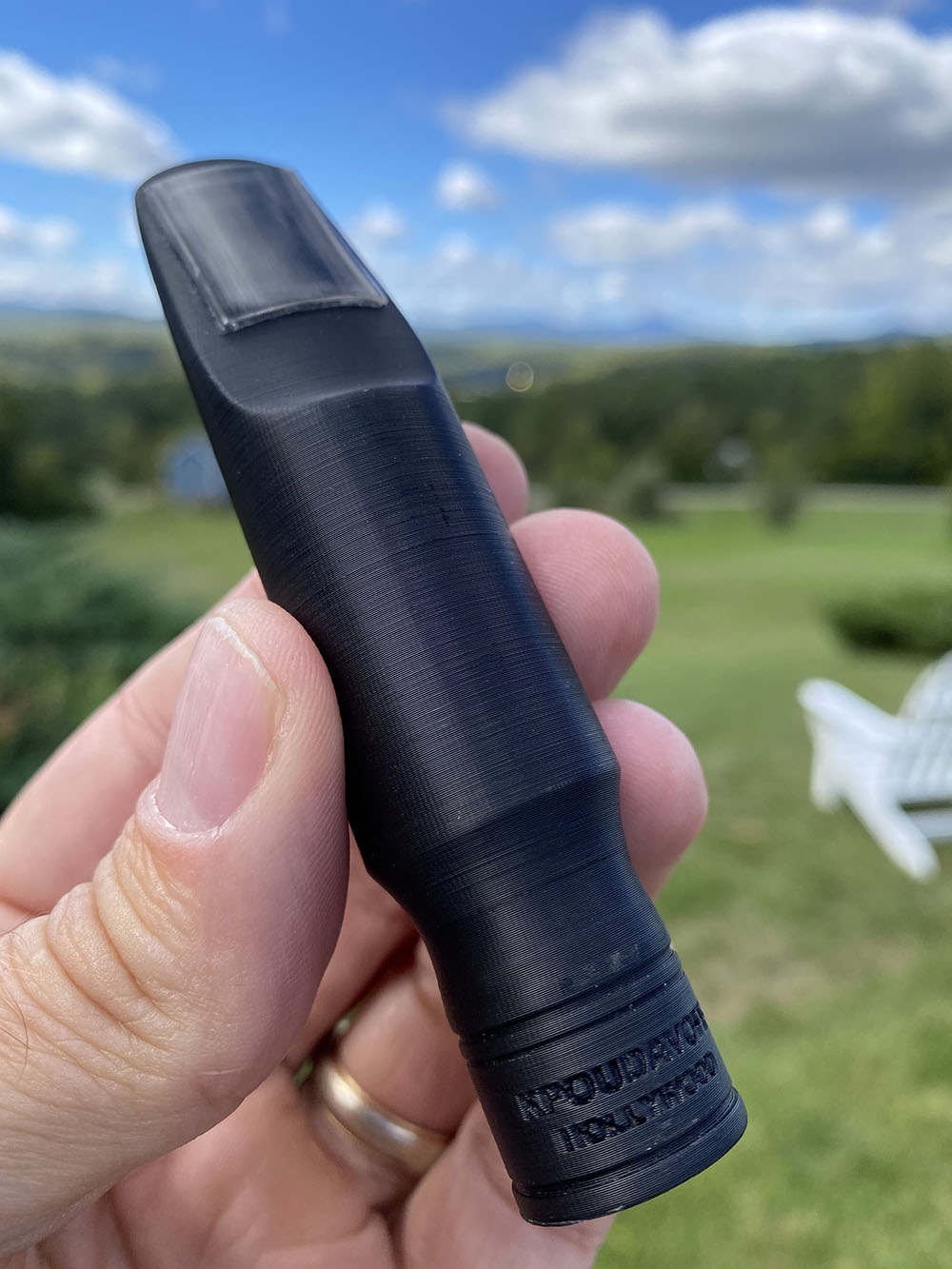





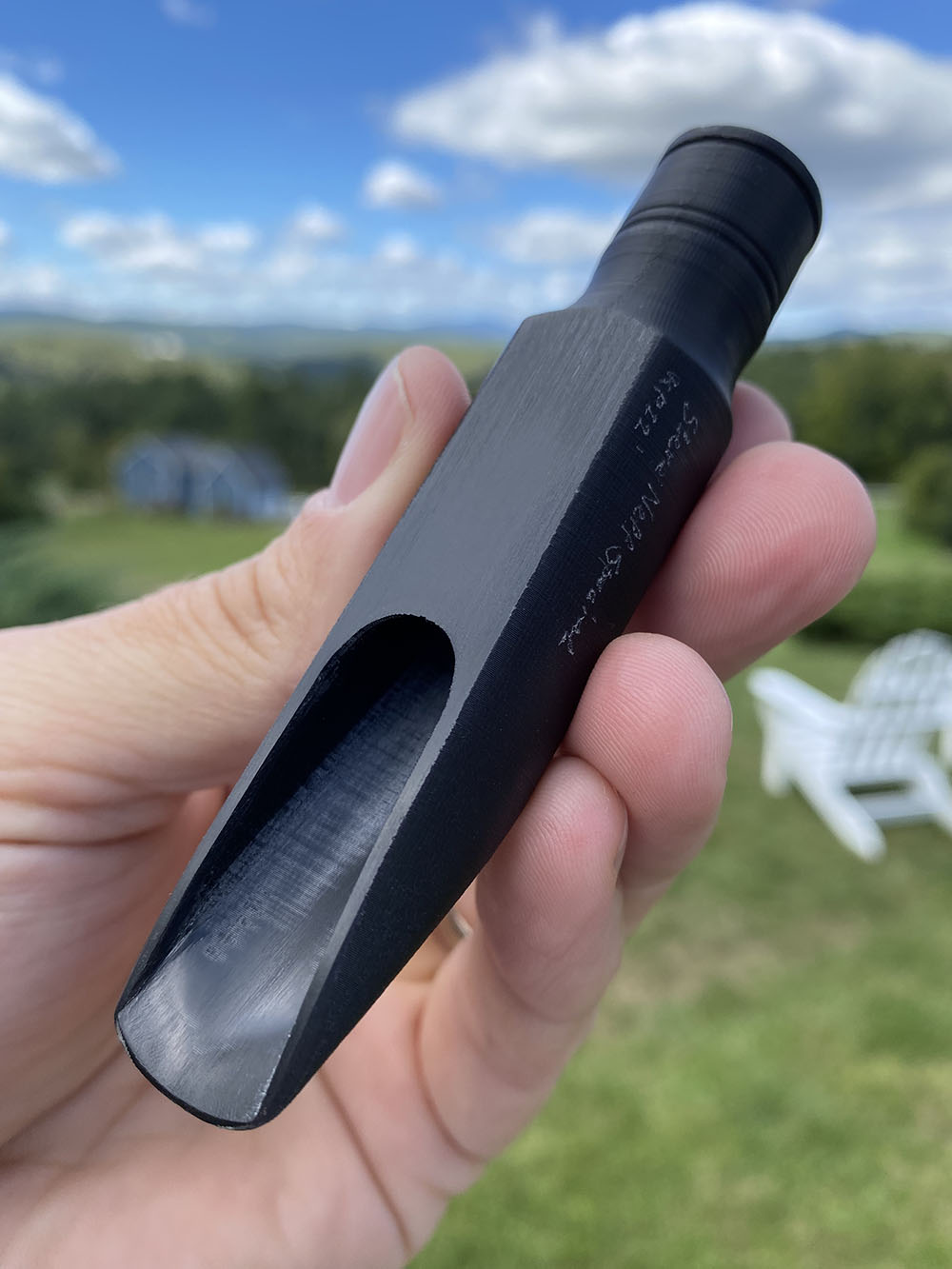
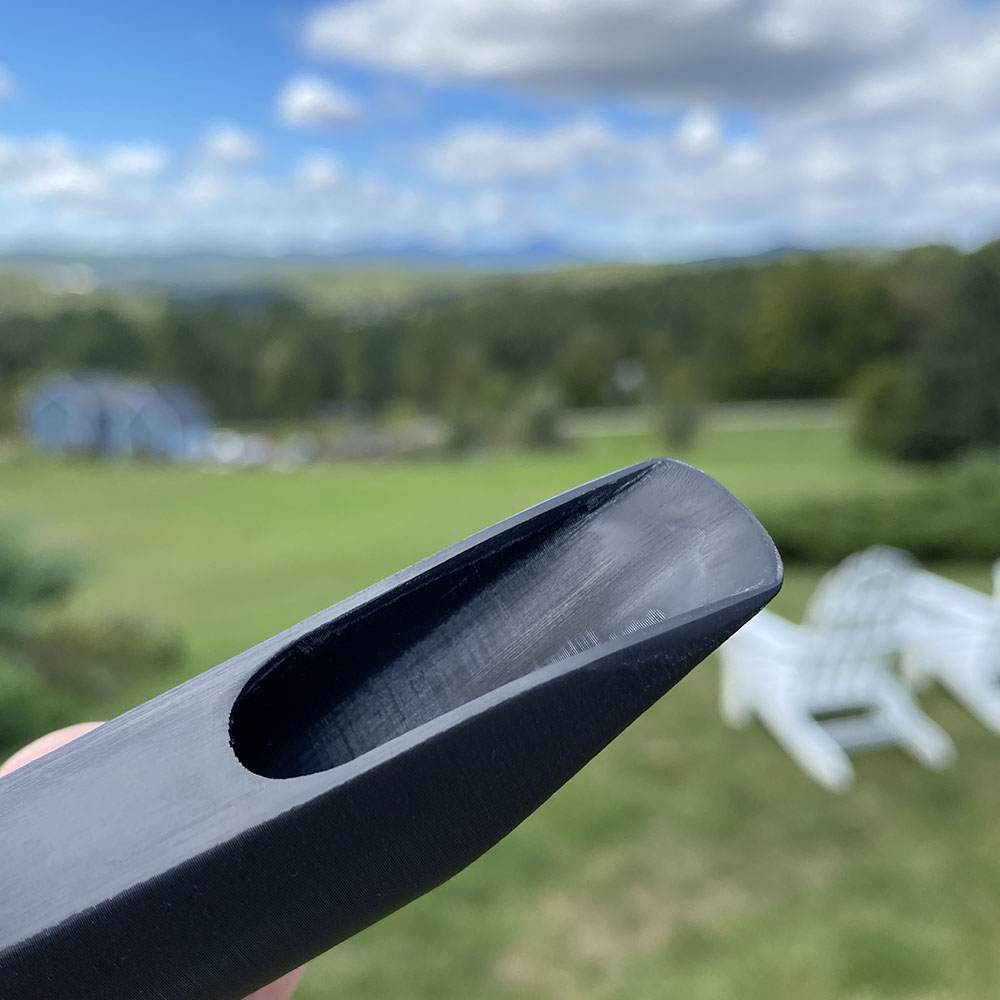


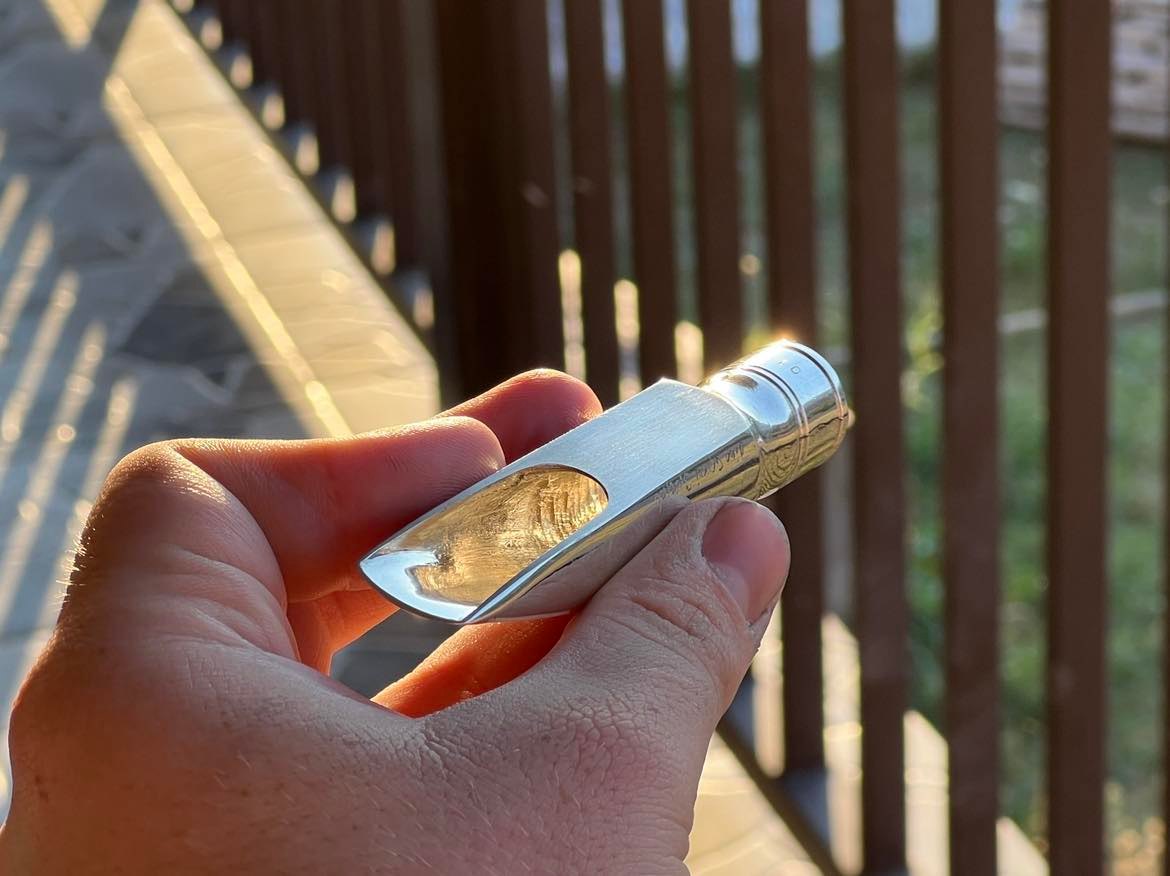


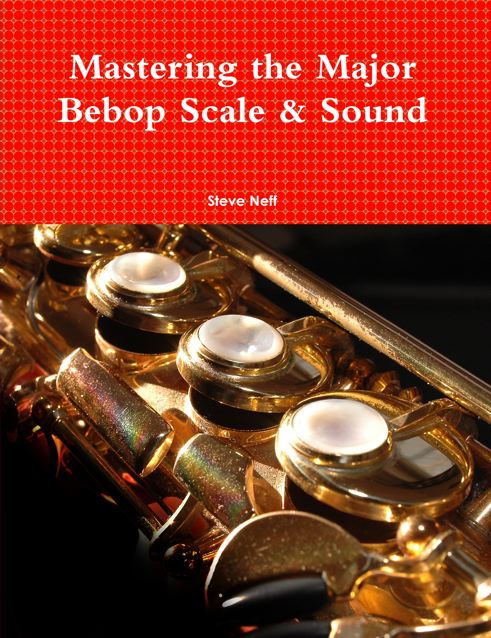


I really like this Dukoff Hollywood 6*, and I prefer it to the sound of the 7* Hollywood, because it sound seems to me much more complex, rich, with more nuances of sound and, in any case, at the same time, with a nice centered sound and with a lot of core. It seems to me more like the sound of Dexter Gordon’s Dukoff mouthpiece and, even as Steve plays, it reminds me more of Dex, than the 7*.
As perceived by my computer, Kirill’s video seems to me more useful to see his posture in playing than to listen to the sound because, being recorded live, I don’t hear the sounds perfectly …
I have a KPS Zimberoff Hollywood 6* with Dexter curves and love the piece for all the reasons you’ve cited herein. I’m glad to read your comment about spending time for “exploration and discovery” with a mouthpiece, as I think that’s essential to finding the “magic” within any great piece. I’ve had it less than one week and look forward to that exploration journey.
Having said that, I find this a remarkably easy and reed-friendly piece to play. I adore some of my resistant mouthpieces for the “punch” that they can bring to my tone, but this is NOT a resistant mouthpiece, even with its large chamber. I typically adjust my reeds, removing some of the shoulder cane to fatten the low end, but I did not need to do that for this piece. It also sounds better in the upper registers than most of my favorite pieces.
While pondering the loss of Wayne Shorter, I thought I’d play “Infant Eyes” with it and, backing off with my airstream and volume a bit, I was stricken by the almost flute-like qualities in the upper registers, esp. so with altissimo. Some of those high notes in Wayne’s beautiful composition need to be sustained for a long time and this piece seemed easier than most to control and produce very clear and “pure” high notes. Kirill’s pieces are hand-finished pieces and the work around the Zimberoff baffle looks exquisite. It’s a great piece.
Hi Steve,
if i may, a question.
I have a Dukoff S mouthpiece for tenor sax, tip opening 7, purchased in the 80s, which I used when I was young.
This model S, nobody I knew used it, everybody used the D.
Nothing to do with the Dukoff mentioned in the blog.
In searching in the manufacturer’s website, I see that the S model (I don’t know what S means, but I think it’s the brightest model in the relatively modern Dukoff range) is no longer produced.
I remember that, at the time, with the Henke 2 reeds, I got a nice bright, vibrant sound (now I prefer a darker sound), which I heard “in my face”, a sound in Dave Sanborn’s ballpark, naturally transposed on the tenor.
I read on your site that you were dissatisfied with your Dukoff, I guess D, and perhaps your research and your passion for experimenting with many mouthpieces started from there.
In fact I too, even at the time, sometimes didn’t feel satisfied with this mouthpiece, it seemed to me as if it were an “artificial” sound, I can’t explain better.
What do you think S meant, and why is it no longer produced?
Giuseppe.
The only thing I found online about the S is this: https://www.saxophone.org/museum/mouthpieces/specimen/1332
I’m not sure, but I actually might have had one of these when I was younger. I had a “D” and one with another letter. Was there one with a “P”? If not, maybe it was an “S”. Either way I didn’t care for either one. They were super loud, edgy and bright. Plus they both tended to squeak at odd times for no discernible reason. I’m assuming the tables or facing curves were not optimal. I didn’t find the tone to be deep or interesting in my opinion. It seemed kind of one dimensional to me.
Steve, thanks for the link, which says that in fact it is very bright and with a lot of projection.
For me it never squeaked, it responded perfectly and was in tune, and, if I wanted, I could also play the subtones on it or play in subtones or play with a dark blown sound: especially playing it in a dark way the sound seemed a bit strange to me, as mentioned, almost artificial. It is described well in the link.
I’ve been trying to play it for a few minutes lately, but instead of that bright sound it gives me a very loud and open sound; I didn’t have the courage to play it again, for fear that my neighbors would complain!
Weird, it is displayed almost like an antique piece, but it seems like yesterday to me when I was in the shop buying it.
As it is no longer produced, I wonder if it has any minimal collectible value. On the website of the link it did not indicate prices.
Giuseppe.
If I understand the above comments correctly (I may not), apparently the LENGTH of the facing curve is 28mm? And this is LONGER than would be “standard” on a #6 tip opening? (I am referring the the Sebastian Knox post…).
I have TMJ problems, and only recently discovered (a few years ago, and quite by accident) after 40 years of suffering, that a longer facing curve is wheat I need to avoid TMJ issues. It basically relates to the “pressure point” where the mandible and temporal parts of the jaw joint interact with the mouthpiece and reed.
Since I am Dexter’s size,* I wonder if he had TMJ issues and had the facing curve elongated to address this issue?
*6’6″, with 6’8″ wingspan. If you see that photo of Dexter with his right arm jammed back, that’s me. When I met him, we were the same size. He may have been 6’7″ in younger years.
How much is he selling the 3D printer mouthpiece for? I guess he doesn’t have a formal store as I can’t find his mouthpiece mentioned for sale except for a few on Reverb.com.
In the review I mention that he is no longer making the 3D mouthpieces but only brass and sterling silver mouthpiece which are quite a bit more. I believe the 3D pieces were 250 when he was making them and the brass mouthpiece are around 650-750? (not sure of the accuracy of that price)
I thanks for the clarification. I’m sure there are similar mouthpieces that can achieve similar results. His particular does sound nice though.